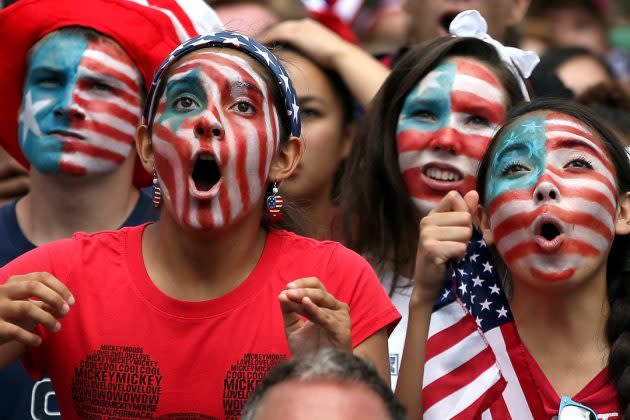
The ninth edition of the FIFA Women’s World Cup, which Australia and New Zealand will host, kicks off on July 20, and interest is high across the globe. Fans from 132 countries have snapped up more than 500,000 tickets with 100 days to go. The tournament is anticipated to break the overall attendance record of 1.1 million set at France 2019.
U.S. soccer supporters are among the most ardent. More than 82% plan to follow the Women’s World Cup, according to a report from London-based Footballco, which surveyed more than 2,000 fans of women’s soccer—male and female—from 10 countries: the UK, Germany, the U.S., Brazil, Japan, Australia, New Zealand, Saudi Arabia, Egypt and the UAE.
More from Sportico.com
The survey asked respondents to identify as either “superfans” (watch as many games as possible, regardless of team), “supporters” (focus on their national team) or “casuals” (occasional watchers). Globally, 52% categorized themselves as supporters or superfans, while in the U.S. that number jumps to 68%. Looking at only superfans, the numbers go to 39% in the U.S. and 23% globally.
“From a U.S. point of view, it’s a very established sport for women,” Morgan Brennan, head of Footballco’s women’s soccer brand, Indivisa, said in a video call. “There has been more of a historical fan base for the women’s national team, obviously, as champions.” In all, the U.S. has won four times (1991, 1999, 2015 and 2019).
In the survey, 45% of U.S. fans said they had been following the women’s game for at least six years, surpassing all other countries except Japan.
The recent but rapid growth of the NWSL may also play a role. Despite recent scandals, the league’s viewership and valuations have skyrocketed. Attendance has also jumped—with Los Angeles’ Angel City FC, the Portland Thorns, San Diego Wave and Kansas City Current leading the way. The league has readied for additional expansion and a new television deal to kick in when its agreement with CBS expires at the end of the season. That may explain why 45% of U.S. fans said they were more interested in women’s soccer now than 12 months ago, a span when the USWNT did not play in any major global competitions. That’s a bigger spike than any other country.
In England, where the domestic women’s game has also made significant progress in the same period, only 34% of fans responded affirmatively.
“Fandom has been developing so rapidly,” Brennan said. “It’s really important that we acknowledge and understand the differences between fandom—a female fan in the UK digests and engages with the game in a very different way [than] a U.S. fan.”
Last summer, England’s success at the Euros drew a crowd of thousands to Wembley Stadium for the final, but at the professional level, both the Women’s Super League and fandom are growing slowly. Currently, 12 teams compete in the WSL, which was launched in 2010 by England’s Football Association, the national organizing body equivalent to U.S. Soccer. Recently, executives have intensified the process to spin the league off into a private entity similar to the men’s Premier League. If approved by the stakeholders, the new league will launch for the 2024-25 season.
With the USWNT favored to win the World Cup, the 2023 tournament may spark a further surge in interest in women’s soccer domestically and abroad, as happened after 2019. That year, the Cup tallied record viewership with a combined 1.12 billion viewers, which was a 106% increase over the 2015 World Cup held in Canada. For the final match, 82.12 million viewers tuned in to watch the U.S. beat the Netherlands, making it the most-watched game in tournament history (up 56% from the 2015 championship).
“2019 was record-breaking at the time,” Brennan said. “But looking back on that now, I think we can expect [more] for this one, despite the geographical and logistical differences being in Australia and New Zealand.”
The logistical differences include a major gap in time zones between the U.S. and Australia, which could lead many U.S. fans to follow the World Cup on other platforms if watching live is not possible.
But logistics are not the only problem. Brennan said to bring in new fans, it is important for them to have consistent media access. “Finding out where these matches are, what times they’re going to be on, really basic information, is still lacking,” she said. “Obviously, around the big moments like the World Cup or the Euros, there’s a lot more coverage around it, but it’s the in-between bits that really need to be sustained.”
Best of Sportico.com

